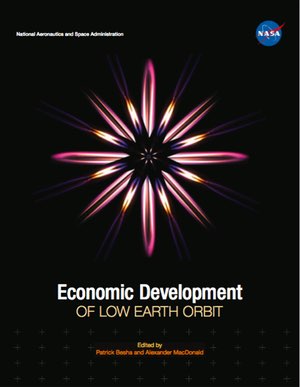Review: Economic Development of Low Earth Orbitby Jeff Foust
|
| Those survey results include one potentially worrisome finding: those who flew experiments on the ISS appeared undecided about whether they expect to do research on the station in the future. |
The five papers included in the book take a look at both big-picture issues, such as facilitating commercialization of work on the ISS, to a specific examination of the potential of one particular area, protein crystallization for drug development. These documents are research papers, rather than how-to guides, but do offer some recommendations for how NASA can help further commercial activities in LEO.
Some of those recommendations are common sense. One paper examines whether providing more information about previous research and development projects on the ISS would encourage future efforts. Not surprisingly, the authors conclude the answer is yes. Less clear, though, is how willing companies would be to share information they might consider proprietary with potential competitors.
That particular study was based in part on a survey of a subset of both those who have done research on the ISS and those that applied unsuccessfully for access to the ISS through the Center for the Advancement of Science in Space (CASIS). Those survey results include one potentially worrisome finding: those who flew experiments on the ISS appeared undecided about whether they expect to do research on the station in the future. While the small sample size (restricted in part to avoid a lengthy review of the survey questionnaire by the Office of Management and Budget required by the Paperwork Reduction Act) means the result may not be true for the full population of ISS researchers, it should serve as a cautionary note to NASA and CASIS.
Another paper examines the history of venture capital (VC) investment in space, including LEO activities. The authors of that paper concluded that there are several barrier to VC investment in commercial LEO endeavors on the ISS, including the lack of demonstrated commercial success of microgravity research there, a lack of payload capacity getting to and from the station, limited time and resources on the station itself, and a lack of awareness of the ISS for applied commercial research. A separate paper argues that NASA should avoid focusing too much on “early-phase” research on the station that are primarily of scientific interest, and devote more attention to applied research with clearer commercial applications.
Economic Development of Low Earth Orbit is not, as noted above, a complete guide to the issues of commercializing research on the ISS and handing it over to a private station some time in the next decade. Nor does the book provide a complete guide to potential approaches to bridge that gap from the ISS to a future commercial station or stations. It does, though, explore some of those issues in detail, and suggest some solutions to them, helping illustrate the magnitude of the challenge facing NASA and the commercial space industry in the next decade.
